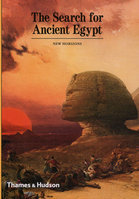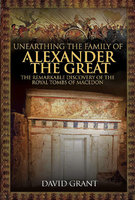Covering a 3000-year period from 3100 BCE to 332, this book on a complex subject is written in a readable chronological style and looks at ancient diplomacy, travel, trade, warfare, domination and immigration. It covers military campaigns including the battle of Qadesh under Rameses II and Hatshepsut's trading mission to the mysterious land of Punt. The rich story behind Egypt's Foreign Relations includes the Nubian Kingdom of Kerma, Nile fortresses, the Sea Peoples and Persian satraps. An Egyptian priest named Manetho estimated that 30 dynasties had ruled Egypt during this time, and modern scholars have adopted Manetho's dynastic divisions largely unchanged, grouping them into longer periods such as the "Early" or "Middle" Kingdom. The book explores Egypt's foreign relations from the Predynastic period to the arrival of Alexander the Great. Egyptians saw their land as representing order, balance and justice, while the regions beyond represented disorder, and there was a further barrier between humans and gods. Peoples were roughly grouped as Egyptians, Nubians, Libyans and Asiatics. Egyptian iconography shows its rulers smiting and destroying their enemies, and a pharaoh's sandals had images of his enemies on the sole so that he was permanently represented as trampling them into the dust. The reality, though, was that Egyptian rulers also exchanged elaborate courtesies with neighbouring potentates, and in daily life foreigners in roles such as soldiers or diplomats were treated as equals. Egypt was a land of slaves, many of whom had been seized around the Mediterranean coast to work as household servants or navvies on building projects. In the political unrest at the end of the Old Kingdom, the royal court moved from Memphis to Herakleopolis, possibly driven by climate change and drought. Archaeological evidence shows that Nubians of different ethnicities continued to live in the unified territories, and that was still the case when Tuthmosis II and his wife Hatshepsut consolidated their control. His New Kingdom successor, Tuthmosis II, forged north into the Levant, marching through Gaza to confront a hostile coalition of city states at Megiddo. We know that the later Pharaoh Akhenaten received tributes from foreigners because they are pictured at Amarna, while a wrecked sea vessel of the same period provides evidence for trade with Mycenae. Amarna was also the site of diplomatic correspondence, strongly suggesting that the empire looked to Greece during its period of decline. 213 pages, many maps, photos.
Additional product information










